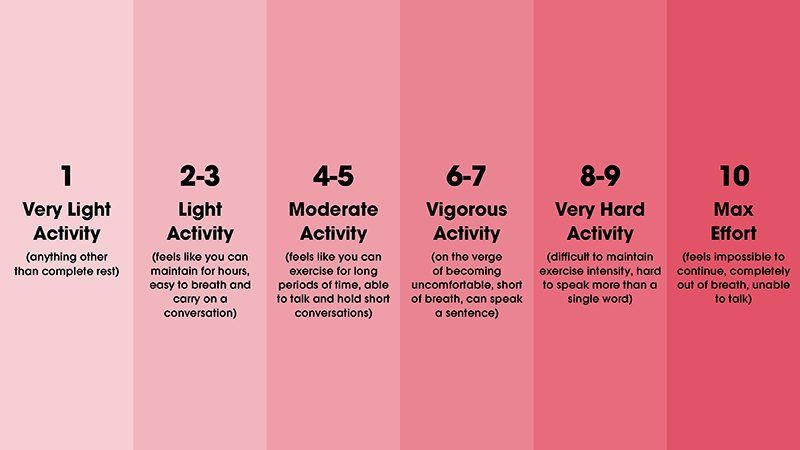Week 1
Walk for happiness
Your focus this week
We don’t need to walk for miles or hours at a time. Short, regular walks can increase our overall sense of well-being and happiness.
Weekly challenge
Today, plan to walk and leave all distractions behind! This means not looking at your phone, even for music. Use every step to think about you and your goals.
Plan support
Have a question about your plan. Reach out to the walking team at walking@heartfoundation.org.au
Welcome to Week 1 of your Personal Walking Plan
You’re already quite active, so we’re going to start off strong!
Your plan has three components:
- Walking
- Stretching
- Strength exercises
Here’s what you’ll be doing in Week 1:
| Week 1 | |
|---|---|
| Number of walks | 5 |
| Duration | 30 minutes per walk + stretching |
| Intensity | Light (3/10) |
| Number of strength sessions | 2 |
Measuring your intensity
Understanding intensity can help you figure out how fast you need to walk. The numbers on this scale indicate different levels of intensity, from low through to extreme.
Rate of Perceived Exertion (RPE) scale
This week, you’ll be aiming for a 3 out of 10. This means you should be able to maintain a conversation while you walk.
Stretching exercises
As you’ll see in your plan, each walk includes a short stretching session. You’ll be doing these stretches throughout your program. Do them at the end of your walk when your muscles are warm – the goal is to help you become more flexible, as well as to reduce muscle stiffness the next day.
Here are some tips to help you get the most out of your stretches:
- Move gradually into each stretch and don’t bounce.
- Hold each stretch for at least 30 seconds if you can.
- Avoid stretching to the point of discomfort (pain, tingling, numbness).
- Repeat each stretch on both sides of the body.
- Repeat each stretch 2–3 times until your muscles feel relaxed.
Ready to get started? Watch our how-to video:
These sessions are designed to improve your strength, balance and overall fitness by strengthening your bones, muscles and joints. But if the word ‘strength’ makes you think about lifting weights at the gym, think again! All our exercises use your bodyweight, which means you can do them just about anywhere.
Getting the terminology right
Repetitions, or ‘reps’, are the number of times you complete an exercise or movement. A ‘set’ is the total number of reps you complete in a single block. For example, if you do 3 sets of 8 squats, that means you’ve completed 24 squats split over 3 separate blocks, with 30-60 seconds rest in between each block.
How many sets and reps?
There are 6 exercises to complete. You’ll need to complete all 6 on 2 separate days. The number of sets and reps you do of each depends on your fitness level.
- Beginner = 1 set of 6–10 reps
- Intermediate = 2 sets of 10-15 reps
- Advanced = 3 sets of 10–15 reps
If you find any level too easy or too hard over the course of your program, you can simply increase or decrease the reps and sets as needed. For example, if you complete 2 sets of 10 sit-to-stands and feel like you could do more, then the next day try 2 sets of 15. If still too easy you could try 3 sets of 15 at your next session! The important thing is to listen to your body.
Tips for getting started
You’ll complete 2 strength sessions every week for the duration of your plan. Here are some tips to help you get the most out of them:
- If you can, schedule your strength sessions on your ‘off’ days – that is, on days you’re not already walking.
- Have at least one rest day in between strength sessions to give your body time to recover.
- If you find one of the exercises too hard, skip it and move to the next one. You can always try again another day. This is important for when you have an injury too.
- Start gradually. The aim is to get your muscles used to the movement, not to push yourself past your limits.
- Breathe normally during the exercises – it's important not to hold your breath.
- If you have time, stretch after you complete your strength exercises. This can help with muscle stiffness the next day.
Here’s a how-to video to help you get started:
Not your cup of tea?
If you give the strength exercises a go and they’re really not for you, don’t worry. Refocus and replace each strength session with some Pilates or yoga, or gardening or other household tasks that require a bit of effort. The aim is to move your muscles more and keep building on your progress – which means there’s more than one way to achieve your goals.
Download and print off your weekly Program Card, Stretching Card and Strength Card to keep track of your progress.
Remember, if you experience any chest pain, have difficulty breathing or become unwell during any physical activity, stop and seek advice from your doctor or health care team.
Share your walks with us
Join our Facebook group and upload a selfie during your walk. Let us know what you're listening to, how the program's going, what you love most about walking.





